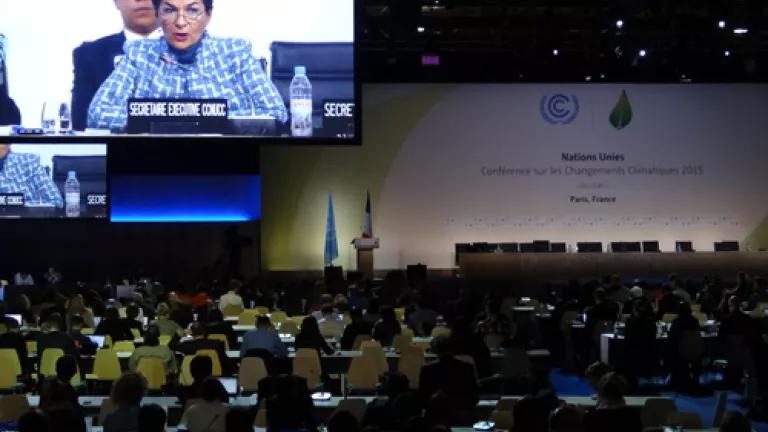
In the Paris Agreement adopted on December 12, 2015, countries made clear that there will be climate finance to support the transition and creation of low carbon economies and to help communities to prepare for the worse impacts of climate change. Developed countries will continue to mobilize $100 billion per year from 2020 to 2025 to support low-carbon growth and climate resilience in developing countries, building on the commitment from the Copenhagen Accord.
By 2025, countries will set a new collective quantified goal for climate finance for at least $100 billion per year. Developing countries are encouraged to provide climate finance on a voluntary basis - giving recognition to the broadening donor pool for international climate finance.
Cycles for Review and Commitments
The finance commitment for $100 billion in annual climate finance from 2020-2025 and timeline for future finance helps to ensure that we are continually ramping-up climate finance to assist the most vulnerable countries. Developed countries will provide information every two years on the amount of climate finance mobilized through public efforts, and developing countries are encouraged to provide these reports as well.
To provide predictability on climate finance, developed countries will communicate every two years on projected levels of public climate finance to be provided to developing countries. Developing countries will report on climate finance they will provide on a voluntary basis. Regular updates send a signal for where low-carbon investments can be made, and the resources available to help the most vulnerable communities adapt to the impacts of climate change.
Broadening the donor base
The broadening of the donor pool is important, because it recognizes the fact that many developing countries are already contributing climate finance. Countries that were considered low-income developing countries several decades ago are now in a position which allows them to contribute climate finance for less developed countries. Countries including Vietnam and Chile have already pledged funds to the Green Climate Fund, and China has pledged $3.1 billion for South-South cooperation between developing countries.
The new Agreement makes clear that developed countries are not shirking their responsibilities for climate finance --- which is a responsibility already recognized as part of the UN Framework Convention on Climate Change. Developing countries are not obligated to provide climate finance, but they are welcomed to contribute financing for climate activities without diluting the responsibilities of developed nations to provide climate finance.
Mobilizing More Support for Adaptation
Financial resources are encouraged to be balanced between resources for adaptation and mitigation, recognizing that the majority of current funding has gone towards mitigation activities. The countries that have contributed the least to the problem of climate change are likely to suffer the greatest impacts. The agreement helps ensure that more resources are provided to assist the most vulnerable in adapting to the impacts of climate change.
Shifting the Trillions
A major objective of the Paris climate conference is to mobilize climate finance around the world. This is about shifting the flow of investments all over the world. Bilateral assistance and the Green Climate Fund are important ways to shift investments, but they are not the full scope of finance needed. There are literally trillions of dollars that need to be mobilized to help spur low carbon and climate resilient economies if we get the right signals and infrastructure in place.
Recognizing that climate finance will need to be mobilized outside of the UNFCCC, the Agreement has recognized that "non-party stakeholders" (civil society, governments besides those at the national level, businesses and others) play an important role in addressing climate change. Their efforts to reduce emissions and build resilience will make the shift to low-carbon growth a reality.
Climate Finance and the Real World
After two weeks of intense discussion at Le Bourget conference center, countries have found ways to compromise on finance. We can see a path forward that allows for sustainable, low-carbon growth in communities around the world.
The Paris Agreement's finance provisions allow for economies to grow by showing that we can de-link the greenhouse gas emissions from economic growth. Standards of living can rise without fossil fuels, as countries get an increasing share of their power from low-carbon sources. There are still hundreds of millions of people worldwide with limited or no access to electricity, and even greater numbers that will be moving to cities, looking for a better life and with a right to greater energy access, food security and quality of life.
The finance components of the new agreement encourage all economies to promote economic growth along a low-carbon pathway. It ensures that developed countries will mobilize at least $100 billion annually starting in 2020 to support such a transition for developing countries, most of whom have contributed very little in terms of emissions. Combined with the groundswell of action by cities, states, businesses and civil society to transition investments to a low-carbon pathway worldwide, this points to a fundamental transformation in how countries approach their economic growth and energy needs.
